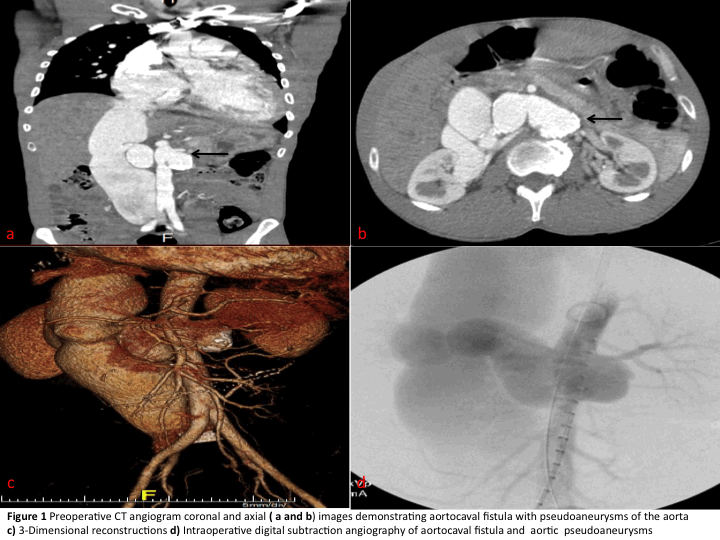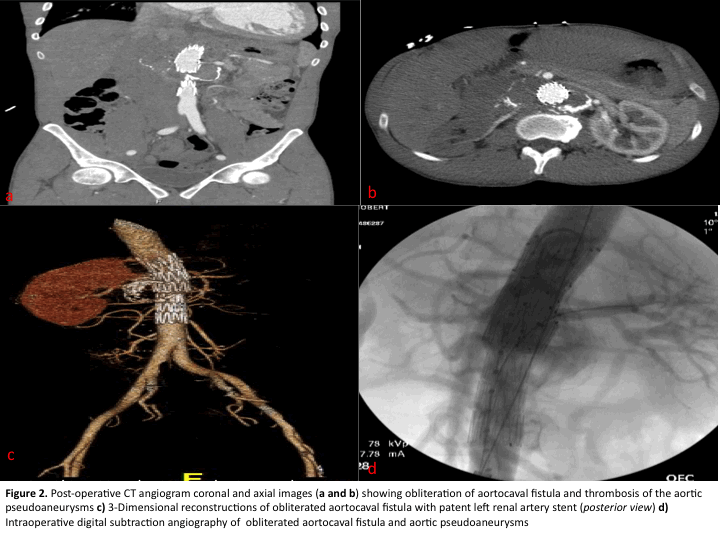Back to 2016 Annual Symposium ePosters
Fenestrated Aortic Endograft Treatment of Aortocaval Fistula with Aortic Pseudoaneurysms Secondary to Penetrating Trauma
Sheila Nafula Blumberg, MD MS, Firas F. Mussa, MD, Thomas S. Maldonado, MD.
NYU Medical Center, New York, NY, USA.
OBJECTIVES:
Aortocaval fistula is a frequently lethal complication of aortic trauma and aneurymsal disease. Open surgical repair has a high morbidity and mortality, and therefore endovascular approaches to treatment have been employed. We present a case of a complicated aortocaval fistula with aortic pseudoaneurysms treated with a fenestrated endograft.
METHODS:
A 28-year-old male presented to our emergency department with abdominal pain, a palpable thrill on exam and a machine-like whirr on auscultation. He reported penetrating trauma as a teenager and had undergone two exploratory laparotomies in the last decade. CT angiography demonstrated an aortocaval fistula with two aortic pseudoaneurysms (Figure 1a-c). Cardiac echocardiogram showed cardiomegaly with a high cardiac output at 19.2 L/min with preserved left ventricular ejection fraction. Given his hostile abdomen, an endovascular approach was utilized. Diagnostic aortogram confirmed intimate involvement of the right renal artery with the pseudo aneurysm (Figure 1d). A Cook Zenith™ fenestrated graft was designed with two fenestrations for the superior mesenteric artery and left renal artery, and intentional coverage of the right renal artery orifice given its involvement with the pseudoaneurysm A 24 x 94 mm fenestrated device was deployed over the aortocaval fistula. A 6x 22mm covered stent was deployed in the left renal artery.
RESULTS:
Completion angiogram demonstrated successful closure of the aortocaval fistula and coverage of both pseudoaneurysms (Figure 2d). Post-operatively, patient had increased afterload in setting of correction of high output state and elevated systemic vascular resistance manifested as hypoxia and hypertension treated with diuresis and antihypertensives. Patient was discharged home on post-operative day ten with normal renal function and preserved ejection fraction. Follow up CT angiogram demonstrated persistent closure of the fistula, no endoleak, and thrombosis of the aortic pseudoaneuyrms (Figure 2 a-c).
CONCLUSIONS:
Endovascular treatment of complicated aortocaval fistula is a preferable alternative to traditional open repair that has a high mortality secondary to bleeding and cardiac compromise.
 
Back to 2016 Annual Symposium ePosters
|








